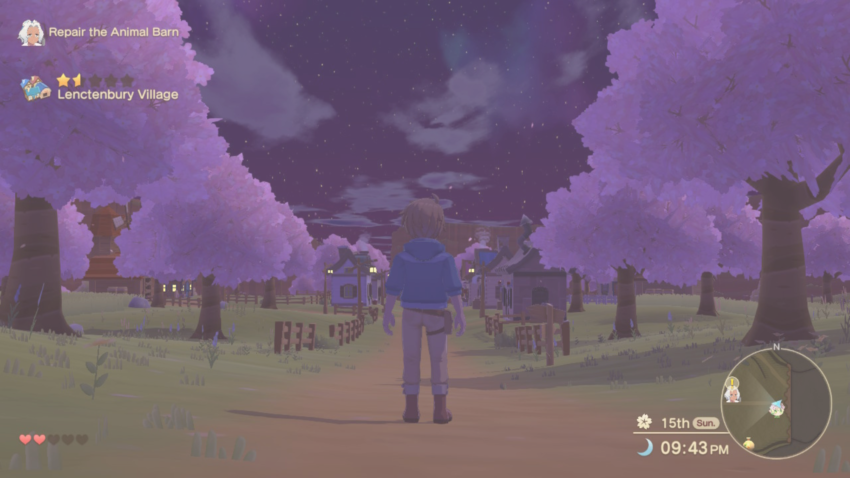Here’s my honest Harvest Moon: Winds of Anthos review. I was not given a review code for this game.
Harvest Moon: Winds of Anthos is the latest game in the farming sim franchise by Natsume. It comes on the heels of Harvest Moon: One World (2021), which took the series in a more open world, explorative direction. HM: Winds of Anthos continues this trend, and unfortunately has many of the same pitfalls.
After trying the game for myself, here is my honest review for Harvest Moon: Winds of Anthos.
I reviewed Harvest Moon: Winds of Anthos on Nintendo Switch. Some spoilers around the story and gameplay may be present with the review. No major plot twists will be revealed.
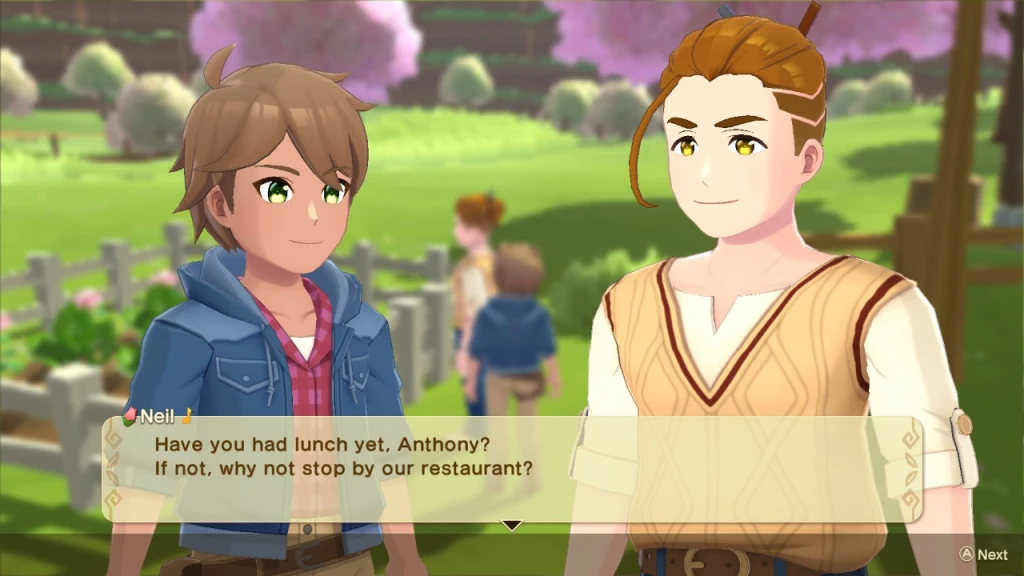
The Story
Harvest Moon: Winds of Anthos centers on a plotline fans of the franchise will find familiar: The Harvest Goddess and her Sprites are in peril, and your farmer is the only one who can help them. Ten years ago, a volcanic eruption was prevented by divine magic that left the Harvest Goddess weakened and locked away. You will spend the first in-game week learning this lore at lightning speed and then setting in motion a plan to restore the Goddess to her former glory. You will learn that the villages strewn about the land need your help, too. By befriending villagers and completing quests, you can upgrade and expand each town and help the communities begin to thrive.
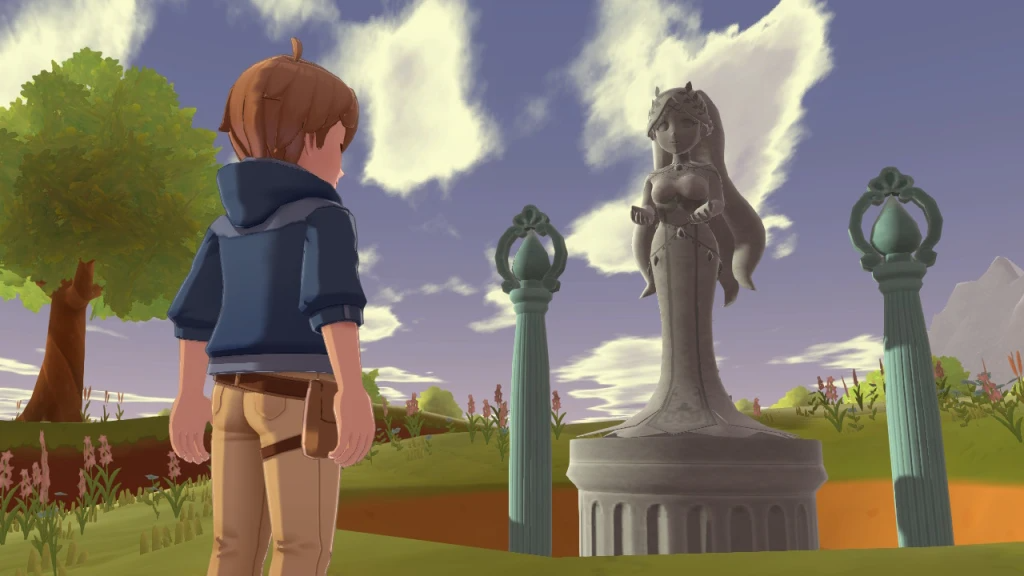
First Impressions
First and foremost, the tutorial is excruciatingly slow. One in-game day will pass and all you will have done was learn how to sew and water your tiny field. Progress starts and stops repeatedly, requiring you to sleep to get to the next key event. Spring is a quarter gone before you can even start making decisions for yourself in the game. It’s frustrating and dull, and nothing about the early game structure promises the tedium will pay off later. If there is a diamond in there somewhere, it is buried very, very deep in the rough. Many players will be completely discouraged before the game even lifts-off.
The game starts in media res, assuming your farmer has been living in town for sometime now. (Somehow, they still don’t know how to water a plant—but I digress.) There is no introduction. Presumably, your character knows all the residents in the town of Lenctenbury. This is an alienating storytelling technique because, well, the player doesn’t know these characters and is struggling to catch up while also memorizing tutorial data. Furthermore, your first major game quest is to leave the town. That’s right, you barely get to know these people and you are already trying to be literally anywhere but here. It feels incomplete, clumsy, and rushed.
The town of Lenctenbury, besides being extraordinarily hard to pronounce, is empty and uninteresting. There are a handful of residents and not much to do, shop for, or explore. Many of the buildings won’t let you enter them unless an NPC is inside, making it feel like a cardboard background painted for a high school play more than a living, breathing community. I guess it’s “realistic,” since I wouldn’t walk into my neighbor’s house IRL unless they were home, but it goes against the grain for most modern game design.
Unfortunately, I spent my first in-game month being bored with how little there was to do, see, and interact with around me.
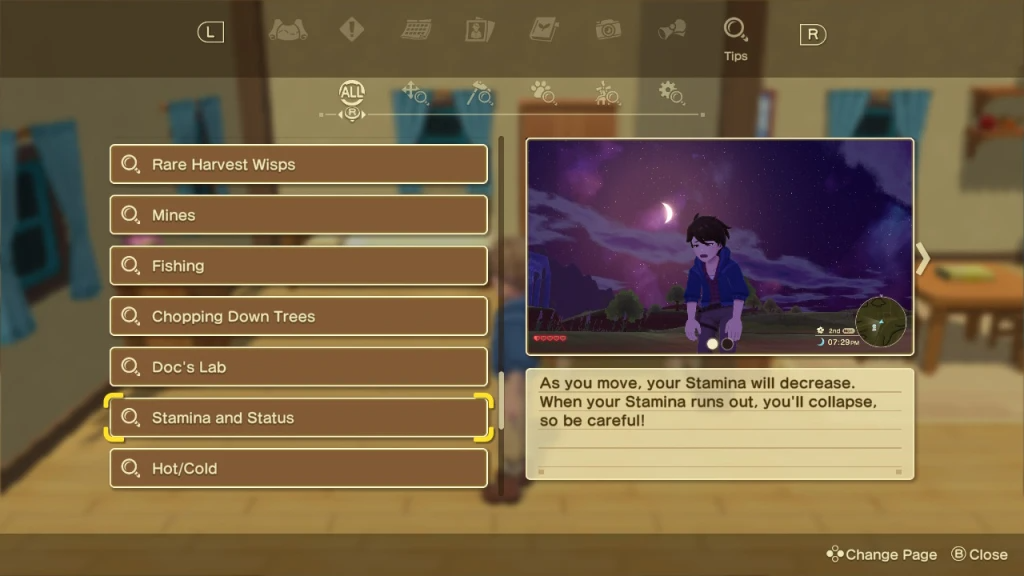
Gameplay Loop
In your first few days, you will learn that finding Harvest Whisps is a key element of the game. That’s how you get seeds, as opposed to the expected way of just buying them from a general store. It…doesn’t make any sense. Is this how other farmers get their seeds, too? Is there a Harvest Wisp seed economy running things behind the scenes? It also takes away player agency, as they don’t need to work to make money. You earn money from the produce that comes from the free seeds. That takes away the challenge and satisfaction that is supposed to come from running your own farm.
Speaking of getting things for “free,” the game also lets you make animal feed from cut grass and fertilizer from waste collected by cleaning the barn. Everything you would usually buy or craft is handed to you. It really felt like the game was rushing the “basics” so that the player could focus on exploring the open world map. It continuously made me question why this is even a Harvest Moon game. The game isn’t interested in spending time farming at all.
I was presented with an immediate problem once I actually started exploring, though. Both my garden field and my inventory pouch were incredibly small. But the only motivation I had for exploration right off the bat was collecting Harvest Whisps to get new seeds. As soon as my backpack and field were full, there was no reason to leave the village. The trickle of side quests wasn’t enough to keep me occupied while I waited for my crops to grow and the field to be reseeded. The gameplay loop ground to a halt.
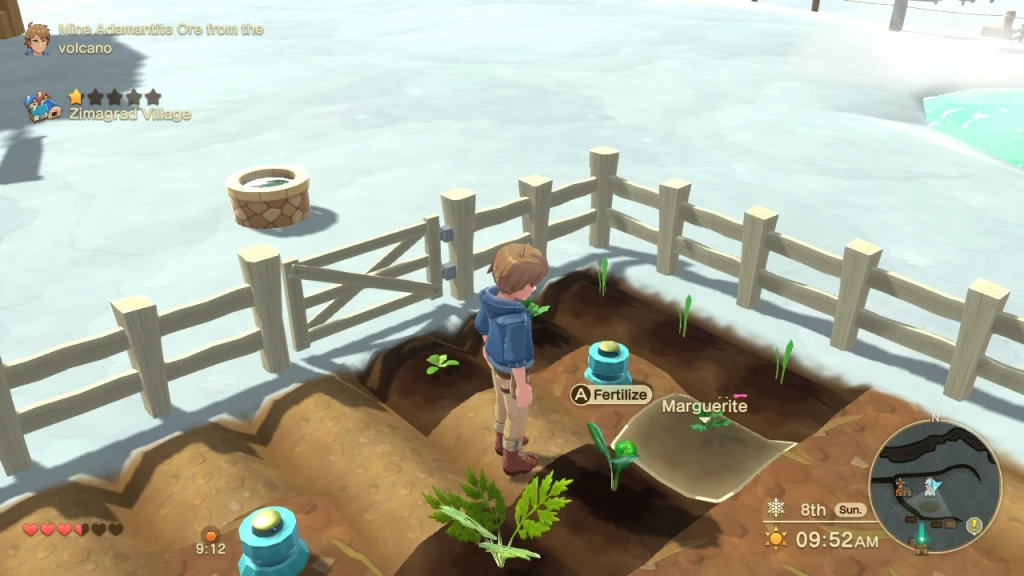
Not to mention: Everything costs stamina, including simply walking around. Spending stamina on normal movement is extremely punishing and discourages the player from exploring unless they absolutely have to. You can, however, forage for wild food stuff—apples and mushrooms are in abundance—and eat them to restore energy. But it still discouraged me from traveling too far unless the game quests required it. Why risk passing out or tearing through my food reserves just to wander aimlessly?
I also couldn’t justify resource-gathering because the stamina limitations meant I could only break apart 1-2 stones or chop down 1-2 trees before I ran out of juice. So stockpiling building materials was off the table when deciding how to spend my time. The average day (early on) went like this: wake up, water my garden, talk to all the villagers, and then wait for bedtime.
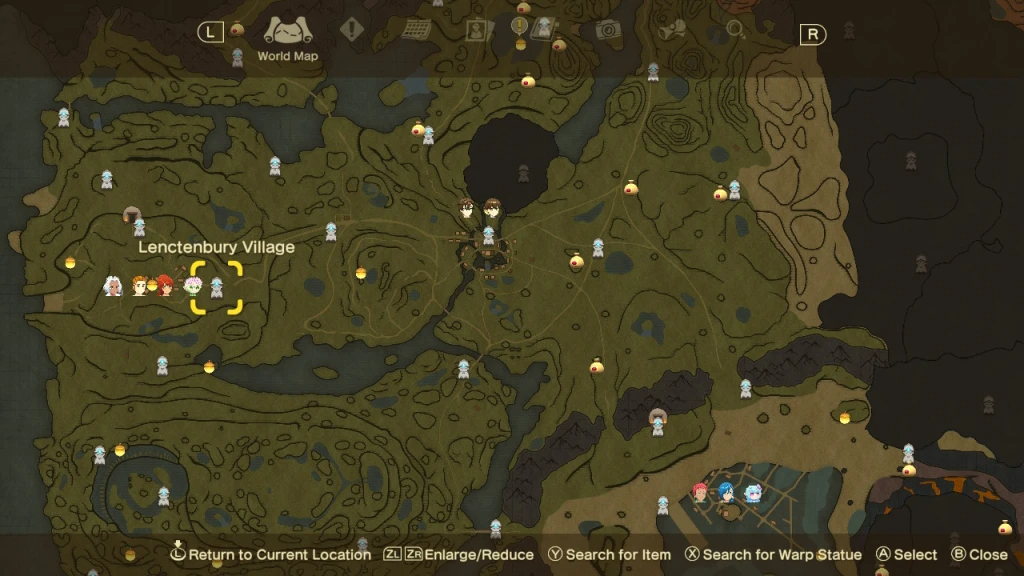
Eventually the game will give you a quest that encourages you to enter the mines (rebuilding your barn). Mining tends to be a key element of farming sims, harkening all the way back to Harvest Moon SNES. Harvest Moon: Winds of Anthos turns it into a bit of a mini game. You use B to “dowse,” looking for hotspots in the soil that contain ore, gems, ladders, or pits. Lower levels have rarer resources and the game saves your decent progress every 10 levels.
Rocks will fall from the ceiling randomly while you are digging and you need to dodge them to avoid losing stamina. There are far too many pitfalls that make you drop a few levels and, again, lose more stamina. There are different mine entrances scattered across the map, each with their own save/progression system so you are constantly starting from scratch.
It’s…messy. It plays and looks like a GameCube game. The areas are poorly designed and the mechanics are clumsy. Nothing about it is fun or satisfying. The falling rocks are annoying and don’t add anything to the experience, nor do they really make sense. It all feels like busy work.
Like most elements of the game, the mines aren’t difficult—just poorly designed. The camera crops too closely and doesn’t swivel well; the dowsing is an unnecessary time waster; the falling rocks are gimmicky; time passes quickly in-game and you need to get through 10 floors before the game saves your place for quick travel; and each area is barren and looks like it was rendered with tech three console generations old.
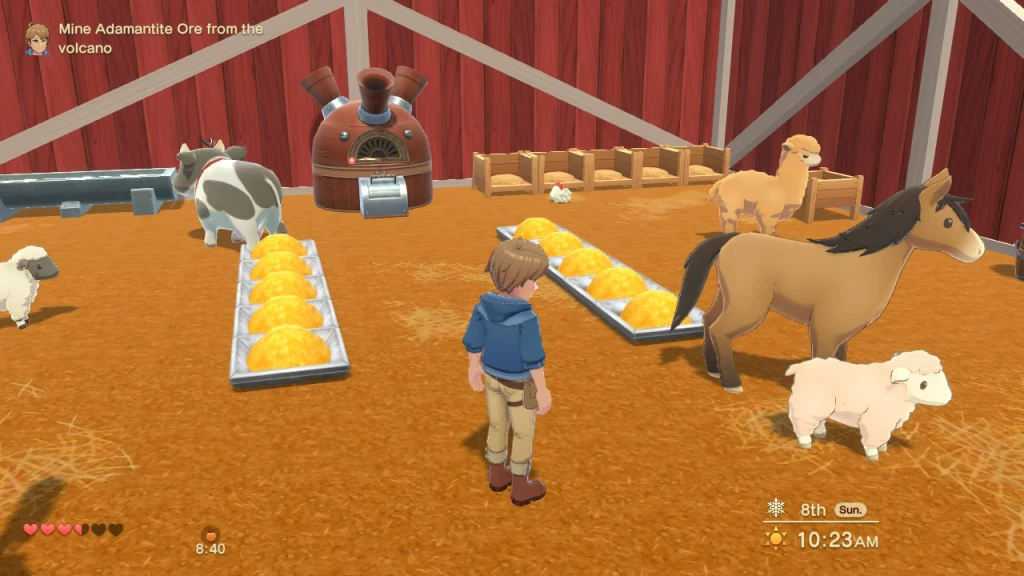
After you construct your barn, the game will start to push you to explore the open world. Like Harvest Moon: One World, you will also be equipped with a “traveling farm” that can move with you across the map. It’s a bizarre departure from the farming sim narrative of settling in a new community and feeling like you are building a life there.
The story expands at this point, urging you to find the remaining Harvest Sprites scattered across the land. You’ll spend your time completing quests to unlock new areas, revitalizing the various villages, and performing quests to help each Harvest Sprite regain their power.
Quests are what you would expect—either farming, fishing, foraging, or tending to your animals to collect the required goods. Once you complete a handful of them, the game will point you toward whatever item the Harvest Sprite requested. You can either choose to hang around and help villagers with their requests or move on.

Each village has a star ranking that represents its “Cultural Rank.” Interacting with villagers and fulfilling their requests increases that rank. This will change how the town looks and increase the variety of items sold in the shops. The problem with this system is that the towns feel too empty unless you spend this time sprucing them up. I have noticed that modern Harvest Moon games fall into this trap. They make players “earn” a satisfying game world. You have to work to unlock characters, homes, shops, and store merchandise. But that leaves much of the early game feeling devoid of life.
The quests you’ll get to increase Cultural Rank can be kind of…random. (Why does a child need 5 sheets of copper?) But the loop of getting and completing a steady stream of quests is simple and satisfying. It also gives you a reason to head back to places you have already moved on from. Though it wasn’t enough to keep me fully immersed in the Winds of Anthos world, I can imagine that task-oriented players will be seduced by this loop.
If you sink your teeth into it, revitalizing each area will probably provide more satisfaction than chasing the main quest.
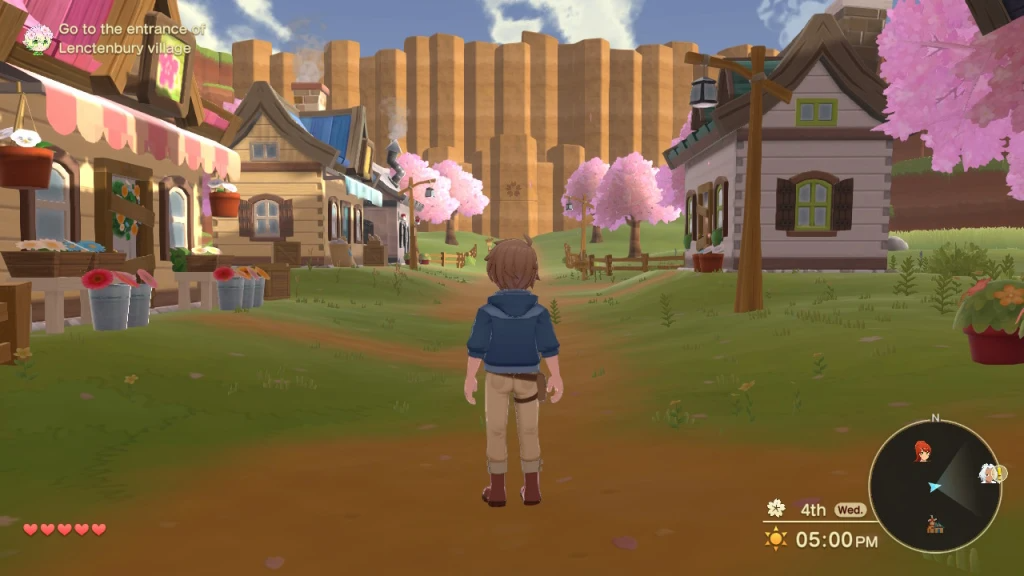
If you give the game some time to open up (and it requires a lot of patience), there is something special here. Wandering the map has its frustrations (no jump mechanic, lots of finicky ledges) but it is undeniably satisfying to explore slowly and open up each region.
The environment acts a bit like a puzzle. Where do I go to get to the next area? How do I get around this cliff or lake? Occasionally you’ll stop to mend a bridge or grab a Power Wisp. You’ll find new animals to try to tame, new seed varieties, or maybe even a mine entrance.
You will need Power Wisps (the yellow/gold Wisps) to increase your bag sizes (food, item, and materials is each a separate bag) as well as increase your stamina bar. This, along with resource gathering for quests, can fuel your exploration.
Traversal isn’t perfect. It’s finicky and maze-like to cross the map. There are a lot of dead ends and backtracking. But the gist of something cool is there. Between beautifying each village and unlocking the map piece by piece, there is an interesting concept here. It’s just not much of a farming sim.
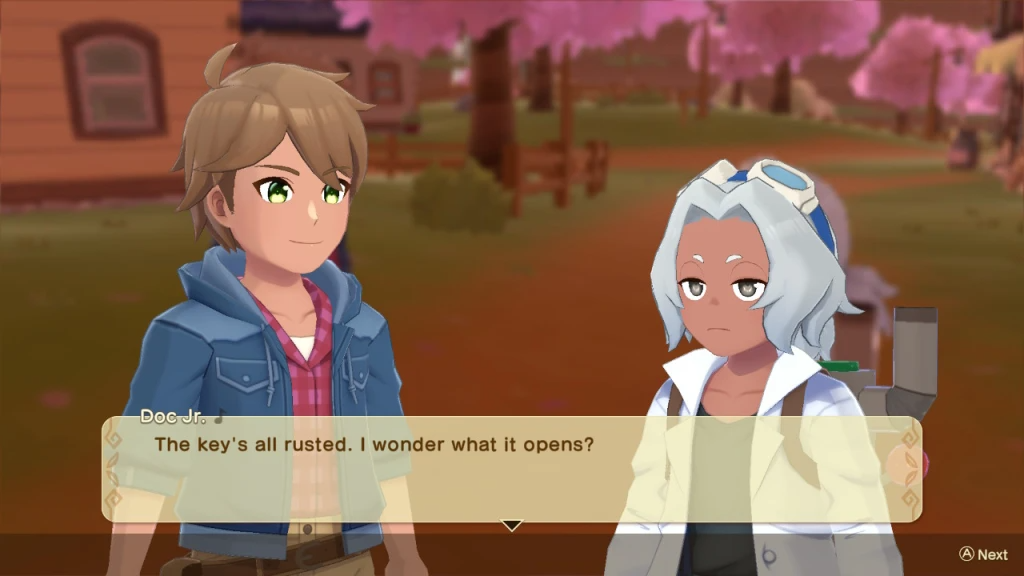
It seems Harvest Moon has come to a branching path: double down on the farming elements or split off into an open world adventure. They are leaning toward the latter. It’s not quite there yet, with tons of room for refinement and tweaking, but it could make them stand out in the farming sim space. It could be something unique, special. It just needs some work.
Harvest Moon is never going to be a “great” open world game compared to what is available on the market these days. The combination of farming sim and open world adventure could, however, make them stand out in their niche genre. This runs the risk of alienating cozy gaming folks who prefer farming sims as a “break” from the AAA action/adventure games that rule the store shelves.
Characters

Unfortunately, Harvest Moon: Winds of Anthos continues the recent franchise trend of having bland, mediocre NPCs. None of them stand out in their personalities or mannerisms. You won’t spend much time getting to know them, either, as the game pushes you to keep traveling around the map. Each town only has a small handful of residents, making the game feel like it’s one small town stretched too thin across a needlessly vast map.
Each denizen has pretty much the same characteristics: Friendly, passive, uncomplicated. No one can do anything without you. Buildings are run down, festivals are dead in the water, businesses don’t have the stock they need. There is no sensation that these are real people with hopes and dreams. They are just set pieces on the stage of your adventure.
There are 8 marriage candidates scattered across the world. Thanks to quick travel, you should be able to spend a moment here or there wooing at least one of them. But being an adventuring nomad makes getting to know anyone more of a hassle than it’s worth. Moving through the main story will eventually take you far, far away from your bachelor or bachelorette of choice.
The character designs are actually quite interesting and spunky. I would have liked to have them all in the same place and unlocked early on so that getting to know them was a priority. But if you spend more than a few cutscenes with them, you’ll notice that they fall into a familiar trap. Their only personality trait is their industry. Be it cooking, animals, fishing, or whatever, that’s what they will mostly talk about. Cutscenes are equally uninspired. You don’t get the feeling that these people are anything more than a brief sketch, a starting point to what goes into making a character feel whole.
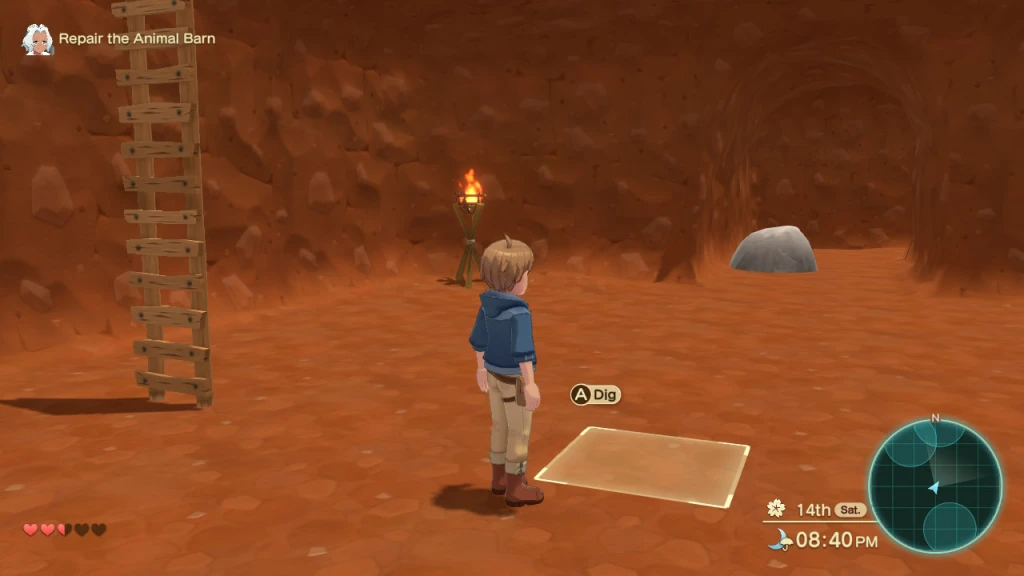
Shout Outs
I know my review skewes negative, but Winds of Anthos wasn’t all bad. Here are a few additional things that I wanted to take the time to commend the game for.
Plant/Animal Variety
Harvest Moon: Winds of Anthos has tons of crop varieties that you can find hidden around the map or sold in the village stores. You can also meet and tame all sorts of pets and mounts, even dinosaurs. Petting high-friendship livestock and pets can even provide benefits, like a stamina boost or cold/hot weather resistance. This is one of the most fun, dynamic elements of the game. It’s goofy, but it works.
Music
The music in this game is my favorite element of the game, by far. I was impressed with the depth of each piece and the variety of different tracks. It’s not just themed by season, either. Different areas have their own tune. The beach town of Lilikala Village has hints of a steel drum, for example, to give it a tropical cadence.
Automation
The game handles switching between tools for you so you don’t need to hit the menus so often. This is something I am seeing a lot in modern farming sims and it will certainly be appreciated by many players. It also lets you pick stuff up while you are on a mount. Small quality-of-life considerations like this make the game more enjoyable to play.
Tried Something New
The Harvest Moon franchise has been around for decades and is largely credited for inventing the console farming sim. It can’t be easy to keep things new and fresh, especially with smaller indies stealing the show on Steam. Trying to build an open world farming sim
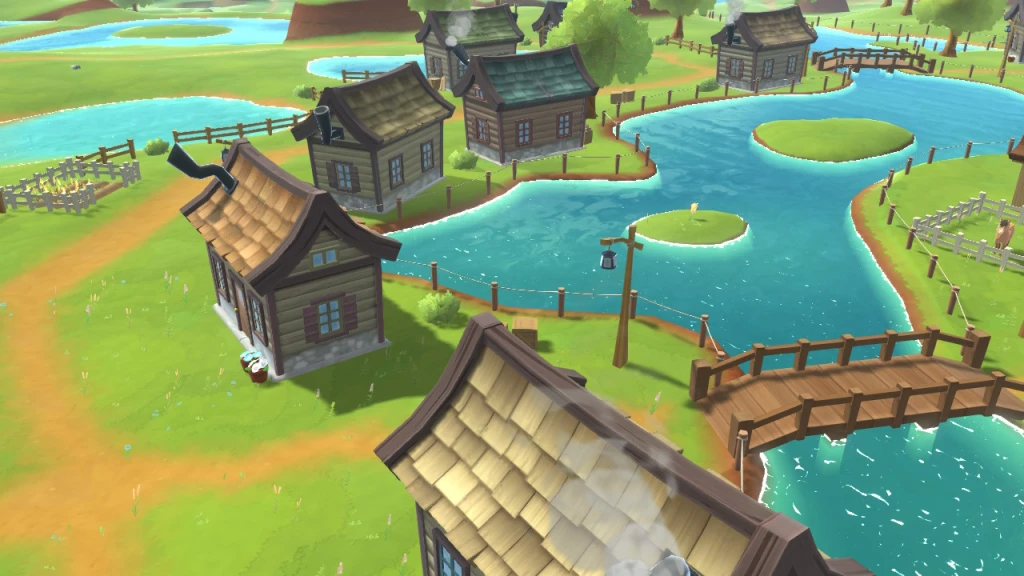
Summary
Harvest Moon: Winds of Anthos is an ambitious new direction for farming/life sim games set in a tedious and uninspired world. Instead of going back to their roots, Natsume seems intent on making changes to a beloved genre and franchise that no one asked for.
I think this speaks to the “out of touch” nature of Natsume games. They see smaller indie titles rising up to steal the mindshare of cozy gamers and farming sim fans and instead of asking what those games are doing right, they try to rewrite the handbook on the genre altogether.
In the modern gaming world, we don’t need more open world games. The Legend of Zelda, Baldur’s Gate, and Starfield aren’t going to be beaten by a 25 year old farming sim franchise. Instead, games like Harvest Moon should stick to what they do best: small, cozy experiences that emphasize putting down roots in a rural community you grow to love.
I would recommend buying Harvest Moon: Winds of Anthos at a discount. Save it to your wishlist and wait for a Steam sale.
Who Harvest Moon: Winds of Anthos is for:
- Players who want a more open world, explorative farming sim
- Players who enjoyed Harvest Moon: One World
- Players who want a more narrative-focused farming sim
Who Harvest Moon: Winds of Anthos is not for:
- Players who want a more traditional farming sim
- Players who don’t enjoy open world exploration
Stay cozy, gamers!
You Might Also Like: THIS Game is the Next Stardew Valley – but Should You Wait to Play It?
